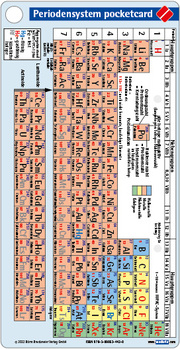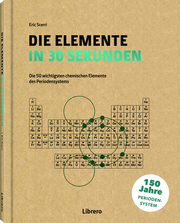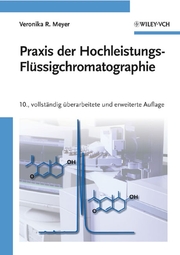Format: EPUB
DRM: Adobe DRM
- Belletristik & Lyrik
- Krimi
- Kinder- und Jugendbuch
- Bilderbücher
- Familie
- E-Reader
- Hörbuch für Erwachsene
- Hörbuch für Kinder
- Reise
- Landkarten & Stadtpläne
- Kalender
- Politik & Wirtschaft
- Gesundheit
- Demenz
- Kochen
- Natur & Tiere
- Regionalia
- Körper und Seele
- Hobby & Basteln
- Humor & Nettigkeiten
- Geschichte & Kultur
- Schulbuch
- Lernhilfen
- Pädagogik
- Psychologie
- Partnerschaft & Erotik
- Fremdsprachige Literatur
- Theologie & Philosophie
- Fantasy & SciFi
- Lifestyle
- New Adult
- Influencer & Blogger
- Graphic Novel
- Manga
- Tickets
- Sprachen
- Biographien
- Sport
- Wissen
- Recht
- Beruf & Karriere
- EDV
- Fahrzeuge
„E-Book“ steht für digitales Buch. Um diese Art von Büchern lesen zu können, wird entweder eine spezielle Software für Computer, Tablets und Smartphones oder ein E-Book Reader benötigt. Da es verschiedene (Datei-)Formate für E-Books gibt, gilt es dabei einiges zu beachten.
Von uns werden digitale Bücher hauptsächlich in zwei Formaten ausgeliefert: EPUB und PDF. Je nach Verlag und Titel kann zu dem Format eine Form vom Kopierschutz (DRM=Digital Rights Management) gehören. Sie können Format und Form des DRM der Detailansicht des Titels entnehmen.
- Bei E-Books ohne DRM (DRM: Nicht vorhanden) müssen Sie lediglich sicherstellen, dass Ihr E-Book Reader, Software oder App das Format (EPUB oder PDF) öffnen kann.
- Der Kopierschutz per Digitalem Wasserzeichen (DRM: Digitales Wasserzeichen) speichert Daten zum Download des Buches direkt in der Datei, die ggf. gerichtlich ausgelesen werden können. Genau wie E-Books ohne DRM können diese Titel ohne Beschränkung kopiert und auf verschiedenen Geräten gespeichert werden, sind allerdings rückverfolgbar.
- Wenn ein Format mit "hartem" Kopierschutz gekoppelt ist (DRM: Adobe DRM), besteht zusätzlich die Notwendigkeit, dass Sie einen kostenlosen Adobe® Account besitzen (genannt Adobe® ID). Nach dem Kauf eines solchen Titels erhalten Sie per Download zunächst eine Übertragungsdatei (URLlink.acsm). Stellen Sie sicher, dass in Ihrer Software (z.B. Adobe® Digital Editions), Ihrer App oder in ihrem Reader die zuvor erwähnte Adobe ID (Ihre E-Mail-Adresse und Ihr Passwort) hinterlegt sind.
Beim ersten Öffnen der Übertragungsdatei im E-Book-Programm oder auf dem Reader wird das Buch untrennbar mit der Adobe ID verknüpft, mit der die Software / das Gerät angemeldet ist.
!! Sollte zu diesem Zeitpunkt keine ID angelegt sein, kann das E-Book nur auf diesem Gerät (Reader oder Computer) gelesen werden und nirgendwo sonst !!
Achten Sie bei der Übertragung von E-Books darauf, dass die selbe Adobe® ID benutzt wird, wie zum ersten Öffnen.
Da E-Books nur für eine begrenzte Zeit – in der Regel 6 Monate – herunterladbar sind, sollten Sie stets eine Sicherheitskopie auf einem Dauerspeicher (Festplatte, USB-Stick oder CD) vorsehen. Auch ist die Menge der Downloads häufig auf maximal 5 begrenzt.
Die Rückgabe von digitalen Inhalten ist technisch bedingt nicht möglich.
Mihail C. Roco1.1 Introduction 11.2 Nanotechnology A FoundationalMegatrend in Science and Engineering 21.3 Three Stages for Establishing the New General Purpose Technology 91.4 Several Challenges for Nanotechnology Development 151.5 About the Return on Investment 161.6 Closing Remarks 21Acknowledgments 22References 222 Nanocarbon Materials in Catalysis 25
Xing Zhang, Xiao Zhang, and Yongye Liang2.1 Introduction to Nanocarbon Materials 252.2 Synthesis and Functionalization of Nanocarbon Materials 262.2.1 Synthesis and Functionalization of Carbon Nanotubes 262.2.2 Synthesis and Functionalization of Graphene and Graphene Oxide 272.2.3 Synthesis and Functionalization of Carbon Nanodots 292.2.4 Synthesis and Functionalization of Mesoporous Carbon 292.3 Applications of Nanocarbon Materials in Electrocatalysis 312.3.1 Oxygen Reduction Reaction 322.3.2 Oxygen Evolution Reaction 362.3.3 Hydrogen Evolution Reaction 392.3.4 Roles of Nanocarbon Materials in Catalytic CO2 Reduction Reaction 432.4 Applications of Nanocarbon Materials in Photocatalysis 472.4.1 Application of Nanocarbon Materials as Photogenerated Charge Acceptors 482.4.2 Application of Nanocarbon Materials as Electron Shuttle Mediator 482.4.3 Application of Nanocarbon Materials as Cocatalyst for Photocatalysts 502.4.4 Application of Nanocarbon Materials as Active Photocatalyst 512.5 Summary 51Acknowledgments 52References 523 Controlling and Characterizing Anisotropic Nanomaterial Dispersion 65
Virginia A. Davis andMicah J. Green3.1 Introduction 653.2 What Is Dispersion andWhy Is It Important? 663.2.1 Factors Affecting Dispersion 733.2.2 Thermodynamic Dissolution of Pristine Nanomaterials 733.2.3 Intermolecular Potential in Dispersions 743.2.4 Functionalization of Nanomaterials 753.2.5 Physical Mixing 773.2.5.1 Sonication 773.2.5.2 Solvent IntercalationMethods 783.2.5.3 Shear Mixing Methods 783.3 Characterizing Dispersion State in Fluids 813.3.1 Visualization 813.3.2 Spectroscopy 833.3.3 TEM 853.3.4 AFM 853.3.5 Light Scattering 853.3.6 Rheology 863.4 Characterization of Dispersion State in Solidified Materials 883.4.1 Microscopy 893.4.2 Electrical Percolation 893.4.3 Mechanical Property Enhancement 893.4.4 Thermal Property Changes 903.5 Conclusion 90Acknowledgments 90References 914 High-Throughput Nanomanufacturing via Spray Processes 101
Gauri Nabar,Matthew Souva, Kil Ho Lee, Souvik De, Jodie Lutkenhaus, Barbara Wyslouzil, and JessicaO.Winter4.1 Introduction 1014.2 Flash Nanoprecipitation 1044.2.1 Overview 1044.2.2 Importance of Rapid Mixing 1054.2.3 Mixers Employed in FNP 1064.2.3.1 Confined Impinging Jet Mixers (CIJMs) 1064.2.3.2 Multi-Inlet Vortex Mixers (MIVMs) 1074.2.3.3 Mixer Selection 1074.2.4 FNP Product Structure 1074.2.5 Applications of FNP Nanocomposites 1084.3 Electrospray 1084.3.1 Overview 1084.3.2 Single Nozzle Electrospray 1094.3.2.1 Forces and Modes of Electrospray 1094.3.2.2 Applications of Single Nozzle Electrospray 1104.3.3 Coaxial Electrospray 1114.3.3.1 Configuration 1114.3.3.2 Applications 1124.3.4 Future Directions 1134.4 Liquid-in-Liquid Electrospray 1134.4.1 Overview 1134.4.2 Importance of Relative Conductivities of the Dispersed and Continuous Phases 1144.4.3 Modified Liquid-in-Liquid Electrospray Designs 1154.4.4 Applications and Future Directions 1174.5 Spray-Assisted Layer-by-Layer Assembly 1174.5.1 Overview 1174.5.2 Influence of Processing Parameters on Film Quality 1194.5.2.1 Effect of Concentration 1204.5.2.2 Effect of Spraying Time 1204.5.2.3 Effect of Spraying Distance 1204.5.2.4 Effect of Air Pressure 1214.5.2.5 Effect of Charge Density 1214.5.2.6 Effect of Rinsing and Blow-Drying 1224.5.2.7 Effect of Rinsing Solution 1224.5.3 Applications 1224.5.4 Future Directions 1234.6 Conclusion and Future Directions 123References 1235 Overview of Nanotechnology in Military and Aerospace Applications 133
Eugene Edwards, Christina Brantley, and Paul B. Ruffin5.1 Introduction 1335.2 Implications of Nanotechnology in Military and Aerospace Systems Applications 1345.3 Nano-Based Microsensor Technology for the Detection of Chemical Agents 1355.3.1 Surface-Enhanced Raman Spectroscopy 1355.3.1.1 Design Approach 1365.3.1.2 Experiment 1375.3.1.3 Results 1385.3.2 Voltammetric Techniques 1395.3.2.1 Design Approach 1405.3.2.2 Experimental/Test Setup 1425.3.2.3 Results 1435.3.3 Functionalized Nanowires Zinc Oxide 1455.3.3.1 Design Approach 1455.3.3.2 Experimental/Test Setup 1465.3.3.3 Results 1465.3.4 Functionalized Nanowires Tin Oxide 1475.3.4.1 Design Approach 1485.3.4.2 Prototype Configuration/Testing 1485.3.4.3 Results 1485.4 Nanotechnology for Missile Health Monitoring 1495.4.1 Nanoporous Membrane Sensors 1505.4.1.1 Design Approach 1505.4.1.2 Experimental Setup and Prototype Configuration 1505.4.1.3 Results 1525.4.2 Multichannel Chip with Single-Walled Carbon Nanotubes Sensor Arrays 1545.4.2.1 Design Concept 1545.4.2.2 Experimental Configuration 1545.4.2.3 Results 1555.4.3 Optical Spectroscopic Configured Sensing Techniques Fiber Optics 1555.4.3.1 Design Concept Spectroscopic Sensing 1565.4.3.2 Experimental Approach/Aged Propellant Samples 1565.4.3.3 Results from Absorption Measurements 1575.5 Nanoenergetics Missile Propellants 1585.5.1 Multiwall Carbon Nanotubes 1585.5.1.1 Design Approach 1585.5.1.2 Experiment 1595.5.1.3 Results 1605.5.2 Single-Wall Carbon Nanotubes 1605.5.2.1 Design Approach 1605.5.2.2 Experiment 1615.5.2.3 Results 1625.6 Nanocomposites for Missile Motor Casings and Structural Components 1625.6.1 Thermal Methods 1625.6.2 VibrationalMethods 1645.6.2.1 Design Approach 1645.6.2.2 Experiment 1645.6.2.3 Results 1655.7 Nanoplasmonics 1675.7.1 Metallic Nanostructures 1685.7.2 Gallium-Based UV Plasmonics 1695.8 Nanothermal Batteries and Supercapacitors 1695.9 Conclusion 172References 1736 Novel Polymer Nanocomposite Ablative Technologies for Thermal Protection of Propulsion andReentry Systems for Space Applications 177
Joseph H. Koo and Thomas O. Mensah6.1 Introduction 1776.2 Motor Nozzle and Insulation Materials 1796.2.1 Behavior of Ablative Materials 1826.3 Advanced Polymer Nanocomposite Ablatives 1846.3.1 Polymer Nanocomposites for Motor Nozzle 1856.3.1.1 Phenolic Nanocomposites Studies byThe University of Texas at Austin 1856.3.1.2 Phenolic-MWNT Nanocomposites Studies by Texas State University-San Marcos 1886.3.2 Polymer Nanocomposites for Internal Insulation 1896.3.2.1 Thermoplastic Polyurethane Nanocomposite (TPUN) Studies by The University of Texas at Austin 1906.4 New Sensing Technology 1956.4.1 In situ Ablation Recession and Thermal Sensors 1966.4.1.1 Production of the C/C Sensor Plugs 1986.4.1.2 Ablation Test Results of Carbon/Carbon Sensors 2006.4.1.3 Ablation Test Results of Carbon/Phenolic Carbon Sensors 2096.4.1.4 Other Ablation Sensors Results 2116.4.1.5 Summary and Conclusions 2126.4.2 Char Strength Sensor 2136.4.2.1 Setup and Calibration of Compression Sensor 2146.4.2.2 Analysis Method 2156.4.2.3 Char Compressive Strength Results 2166.4.2.4 Additional Considerations on the Interpretation of the Data 2236.4.2.5 Concluding Remarks 2266.5 Technologies Needed to Advance Polymer Nanocomposite Ablative Research 2276.5.1 Thermophysical Properties Characterization 2276.5.1.1 Thermal Conductivity 2276.5.1.2 Thermal Expansion 2286.5.1.3 Density and Composition 2286.5.1.4 Microstructure 2296.5.1.5 Elemental Composition 2296.5.1.6 Char Yield 2296.5.1.7 Specific Heat 2296.5.1.8 Heat of Combustion 2306.5.1.9 Optical Properties 2306.5.1.10 Porosity 2306.5.1.11 Permeability 2306.5.2 Ablation Modeling 2316.6 Summary and Conclusion 236 Nomenclature 236Acronyms 237Acknowledgments 237References 2387 Manufacture of Multiscale Composites 245
David O. Olawale,Micah C. McCrary-Dennis, and Okenwa O. Okoli7.1 Introduction 2457.1.1 Multifunctionality of Multiscale Composites 2457.1.2 Nanomaterials 2477.2 Nanoconstituents Preparation Processes 2497.2.1 Functionalization of CNTs 2497.2.1.1 Chemical Functionalization 2497.2.1.2 Physical (Noncovalent) Functionalization 2507.2.2 Dispersion of Carbon Nanotubes 2527.2.2.1 Ultrasonication 2547.2.2.2 Calendering Process 2557.2.2.3 Ball Milling 2567.2.2.4 Stir and Extrusion 2567.2.3 Alignment of CNTS 2587.2.3.1 Ex situ Alignment 2587.2.3.2 Force Field-Induced Alignment of CNTs 2597.2.3.3 Magnetic Field-Induced Alignment of CNTs 2597.2.3.4 Electrospinning-Induced Alignment of CNTs 2607.2.3.5 Liquid Crystalline Phase-induced Alignment of CNTs 2617.3 Liquid Composites Molding (LCM) Processes for Multiscale Composites Manufacturing 2617.3.1 Resin Transfer Molding (RTM) 2627.3.2 Vacuum-Assisted Resin Transfer Molding (VARTM) 2637.3.3 Resin Film Infusion (RFI) 2657.3.4 The Resin Infusion under Flexible Tooling (RIFT) and Resin Infusion between Double Flexible Tooling (RIDFT) 2667.3.5 Autoclave Manufacturing 2677.3.6 Out-of-Autoclave Manufacturing: Quickset 2687.3.6.1 Quickstep 2687.4 Continuous Manufacturing Processes for Multiscale Composites 2697.4.1 Pultrusion 2697.4.2 FilamentWinding 2707.5 Challenges and Advances in Multiscale Composites Manufacturing Environmental, Health, and Safety (E, H,& S) 2717.5.1 Nanoconstituents Processing Hazards 2717.5.2 Composite Production and Processing 2727.5.3 Life Cycle Assessment Use and Disposal 2737.6 Modeling and Simulation Tools for Multiscale Composites Manufacture 2737.6.1 Nanoparticle Modeling 2747.6.2 Molecular Modeling 2747.6.3 Simulation 2747.7 Conclusion 275References 2768 Bioinspired Systems 285
Oluwamayowa Adigun, Alexander S. Freer, LaurieMueller, Christopher Gilpin, BryanW. Boudouris,and Michael T. Harris8.1 Introduction and Literature Overview 2858.2 Electrical Properties of a Single Palladium-Coated Biotemplate 2898.3 Materials and Methods 2908.4 Results and Discussion 2938.5 Conclusion and Outlook 297Acknowledgments 300References 3009 Prediction of Carbon Nanotube Buckypaper Mechanical Properties with Integrated Physics-Based and Statistical Models 307
KanWang, Arda Vanli, Chuck Zhang, and BenWang9.1 Introduction 3079.2 Manufacturing Process of Buckypaper 3109.3 Finite Element-Based ComputationalModels for Buckypaper Mechanical Property Prediction 3139.4 Calibration and Adjustment of FE Models with Statistical Methods 3229.5 Summary 331References 33210 Fabrication and Fatigue of Fiber-Reinforced Polymer Nanocomposites A Tool for Quality Control335
Daniel C. Davis and Thomas O. Mensah10.1 Introduction 33510.2 Materials 33610.2.1 Carbon Fabric and Fiber 33710.2.2 Glass Fabric and Fibers 33710.2.3 Polymer Resin 33710.2.4 Carbon Nanotubes 33810.2.5 Carbon Nanofibers 33910.2.6 Nanoclays 34010.3 Composite Fabrication 34110.3.1 Hand Layup 34110.3.2 Resin Transfer Molding 34210.4 Discussion Fatigue and Fracture 34410.4.1 Fatigue and Durability 34410.4.2 Carbon Nanotube Polymer Matrix Composites 34710.4.3 Carbon Nanofiber Polymer Matrix Composites 34910.4.4 Nanoclay PolymerMatrix Composites 35410.5 Summary and Conclusion 359Acknowledgments 360References 36011 Nanoclays: A Review of Their Toxicological Profiles and Risk Assessment Implementation Strategies369
Alixandra Wagner, Rakesh Gupta, and Cerasela Z. Dinu11.1 Introduction 36911.2 Nanoclay Structure and Resulting Applications 36911.3 Nanoclays in Food Packaging Applications 37011.4 Possible Toxicity upon Implementation of Nanoclay in Consumer Applications 37511.4.1 In Vitro Studies Reveal the Potential of Nanoclay to Induce Changes in Cellular Viability 37611.4.2 Proposed Mechanisms of Toxicity for the In Vitro Cellular Studies 38011.4.3 In Vivo Evaluation of Nanoclay Toxicity 38311.5 Conclusion and Outlook 385Acknowledgments 387References 38812 Nanotechnology EHS: Manufacturing and Colloidal Aspects 395
Geoffrey D. Bothun and Vinka Oyanedel-Craver12.1 Introduction 39512.1.1 Challenges 39712.1.2 Recent Initiatives and Reviews 39912.2 Colloidal Properties and Environmental Transformations 40012.3 Assessing Nano EHS 40212.3.1 Example: Silver Nanoparticles (AgNPs) 40712.3.2 Role of Manufacturing 407Summary 409Acknowledgments 409References 409Index 417















